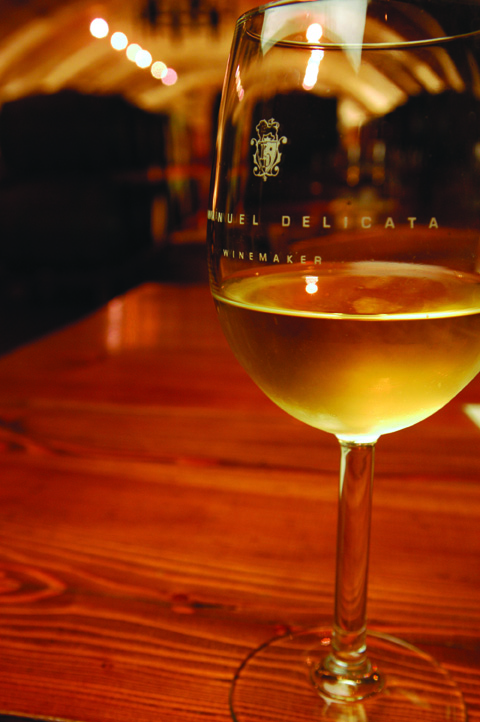Getting to the Bottom of Chardonnay Blends
Though blended white wines (made from two or more grape varieties) have been produced in Europe for centuries, they aren’t always fully appreciated.
And yet, they can be wonderful bottles that have the prowess to fascinate aficionados like a riddle, wrapped in a mystery, inside an enigma.
Luckily, all that’s required to unlock the white wine conundrum is a wine key to pull the cork. Chances are that the pour won’t taste all that unfamiliar because Chardonnay is more often than not the main blending partner anyway – and who has never tried Chardonnay?
The combination with Sauvignon Blanc in still dry whites, although not often talked about, crops up extensively throughout the winemaking world.
The two grape varieties come from two very dissimilar vine gene pools and traditionally produce pretty diverse styles of wine when kept apart. Chardonnay is usually smudgy, round and buttery, while Sauvignon Blanc is razor-sharp, aromatic and zingy.
The dry white wines of Cheverny, a small appellation in the Loire-et-Cher region of France, are an old-school case in point. With a few years of bottle age, the mix made from both grapes morphs into one harmonious, broad and weighty palate.
When done well, white wines like this demonstrate the purpose of blending, which is achieving a complexity that one wouldn’t find in either of its components. The resulting drink offers an array of aromas and flavours to stimulate every part of the mouth from start to finish.
While it’s a very different style of wine, lean rather than fat and best consumed young, the same holds true for Delicata’s original Chardonnay Girgentina blend in the Medina range. Malta-grown Chardonnay has been used as a canvas onto which featherweight Girgentina has been carefully swathed to create something that is truly unlike anything else.

White wine blends are underrated.
The Delicata winery pioneered the wine and has been crafting Malta’s very own white blend every year since the maiden 2000 vintage. It may well be labelled as one of the most unique bottlings on the planet, given the rarity of the bush-trained old vines of the country’s native Girgentina variety.
As a dry white assemblage, Medina Chardonnay Girgentina shows another good reason for blending, namely the pursuit of balance or that pleasing sweet spot of fruit, freshness and forte that makes wine sing.
Delicata’s straw-pale Medina white is elegant, definitely very lively, with a fresh prickle that carries a delicate flowery arrangement of lemon blossom and other subtle citrus perfumes and relishes, all interlaced with fruity tangs of green Granny Smith apple and crunchy Bambinella pear.
In neighbouring Italy, Chardonnay has been a blending grape for most of its local history albeit inconspicuously. But, in instances allowed by the Italian wine classification, it’s now being mentioned more prominently on labels together with the names of Italy’s marketable autochthonous cultivars such as Albana and related Garganega, Sicily’s widely planted Catarratto, Piedmont’s sharp Erbaluce and Favorita, Nuragus from Sardinia, nutty-flavoured Ribolla Gialla or Puglia’s Verdeca.
Not all wine-producing countries are fortunate to possess their own exciting indigenous varieties, however. But that shortage hasn’t stopped their winemakers trying their hand at blending.
In New World territories like Australia, South Africa, California and Chile, the adopted French varieties Sémillon (with waxy, tropical hints), Colombard (for melon and stonefruit characters) and Chenin Blanc (with a damp straw and honeyed hallmark) are common standbys that team up instead with darling Chardonnay.
This article by Georges Meekers was first published in the Times of Malta on 12/10/18.

